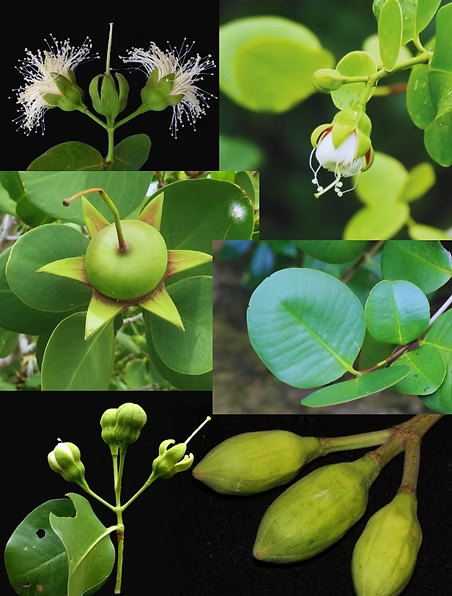
SONNERATIA OVATA






SONNERATIA OVATA

🌱 GROWTH FORM
Sonneratia Ovata has a large wooden trunk with many branches.
The trunk is thin, about 20 cm in diameter.
Its skin peels off in many thin layers, replacing the bark like a guava tree trunk.
🌱 ROOTS
Its roots are classified as pneumatophores, which grow in shallow or moist soil.
They have an upright shape and can reach a maximum height of 40 cm.
It has fewer pneumatophores than Sonneratia Caseolaris.
🌱 LEAVES
Its leaves are single and opposite.
They are thick, oval-shaped, or nearly round.
🌱 FOLIAGE
Its florescence is at the tip of the branch, with 2 – 3 flowers, 5 cm wide, with short flower stalks.
The calyx is at the base and has 6 thick and tough lobes.
The outer surface is green, while the inner surface is blue-white or purple-pink.
🏵️ FLOWERS
Its flowering shoots bear dark red-petalled flowers, 1.5 cm wide, with numerous prominent pinkish-white stamens.
The stamens are filamentous and powderpuff-like when fully open.
Flowering shoots are found at leaf angles or develop at the ends of leafy branches.
The flowers open at dusk and last only for 1 night, with a buttery or sour milk scent and are nectar-rich.
🍊 FRUITS
The berry is slightly lean, hard, and brittle when young.
When ripe, the flesh becomes soft and contains many seeds.
The fruit measures 5 – 8 cm in diameter and 3 – 5 cm high.
A calyx at the base hugs the skin.
🌱 SEEDS
It has many seeds, which are flat and white.
The seeds are located within the flesh of the fruit.
Sonneratia Ovata lives on brackish water. It grows in coastal areas, near river mouths, dunes, and mudflats where there are stable bbeaches.
🌿 Growth Conditions:
✅Type Oil: It is best to have soft mud.











